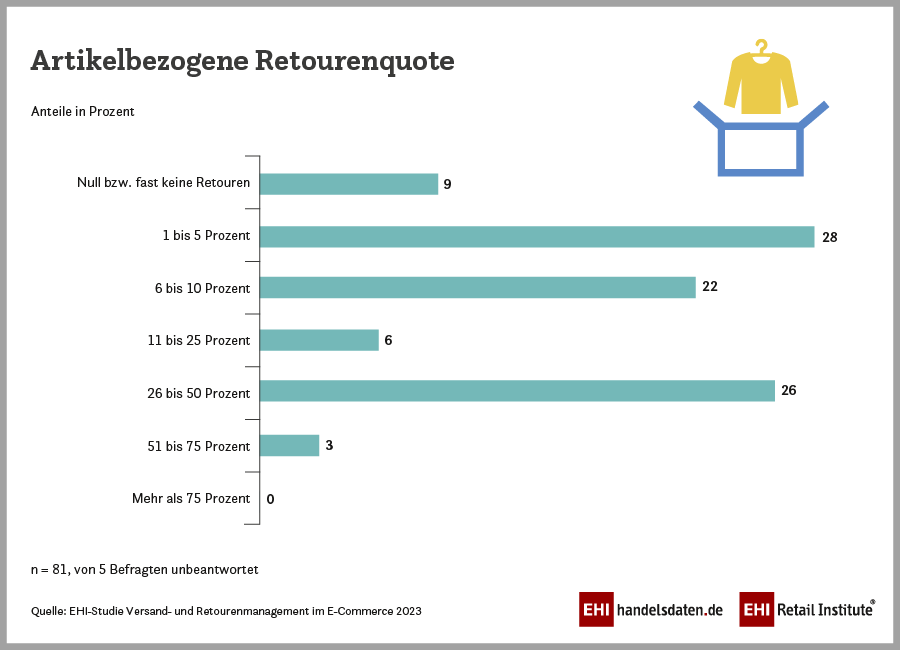Returning goods is always associated with considerable effort and unpleasant costs for retailers. Many retailers are therefore continuing to work on avoiding returns and are focussing even more on the topic. As the new EHI study “Shipping and returns management in e-commerce 2023” shows, avoiding returns is a top priority for most online retailers. “Retailers’ endeavours to avoid returns are due to the sometimes very high volume of returns and the associated costs. Although the average returns rate is rather moderate, it is very high in some product ranges,” explains study author Hilka Bergmann.
Return rates
On average, the article-related returns rate is between six and ten per cent. There are major differences in return rates between the individual product segments. It is lowest in the food and luxury goods segment. The fashion & accessories segment has to contend with particularly high return rates of 26 to 50 per cent on average and in some cases up to 75 per cent. Here, online shoppers often order several items before deciding which garment they like best when they try it on. This selection process, which is tolerated by online retailers, is part of the business model.
Returns costs
The shipping costs incurred for returns are covered by the online retailer in 64 per cent of cases. But it’s not just returns shipping that is expensive. Further processing is also costly. The average cost per returned item is between five and ten euros. Here, too, there are clear differences between the various product ranges. While the costs per item are particularly low in the food and luxury food sector, the highest average costs are incurred in the home & furnishings sector. Here, the average cost is between ten and 20 euros, as some of the items are large-volume and expensive, making it difficult to return, process and repair them. Fifty-six per cent identify the checking, inspection and quality control of items as the biggest cost drivers in the returns business.
Reusability
On average, between 50 and 75 per cent of returned items can be reused as A-grade goods for shipping. The range of reusable products extends from almost all to none, which is due to the large differences between the individual product segments. In the fashion segment, which is characterised by particularly high return rates, the average proportion of reusable returns is higher (76 to 99 percent). The reason for returns here is usually a selection decision and not a damaged item. The situation is different in the consumer electronics, DIY & garden and car accessories product segments. Here, the proportion of returned items that can be reused as A-goods is lower (26 to 50 per cent), as returned items are often damaged.
Avoiding returns
For 74 per cent, avoiding returns is the top priority. This is six per cent more than in the previous year. In order to be able to take the right measures, 70 per cent of respondents record the reasons for returns. 61 per cent state that they derive specific optimisations from this. The majority of respondents (86 per cent) see detailed product information in the online shop as a decisive measure to reduce the returns rate. Precise images and descriptions of the items should help customers to assess whether the product actually meets their requirements and wishes before ordering. Other important measures from the retailers’ point of view include secure packaging (43 per cent), contact options for personal advice (42 per cent) and address verification (40 per cent).





